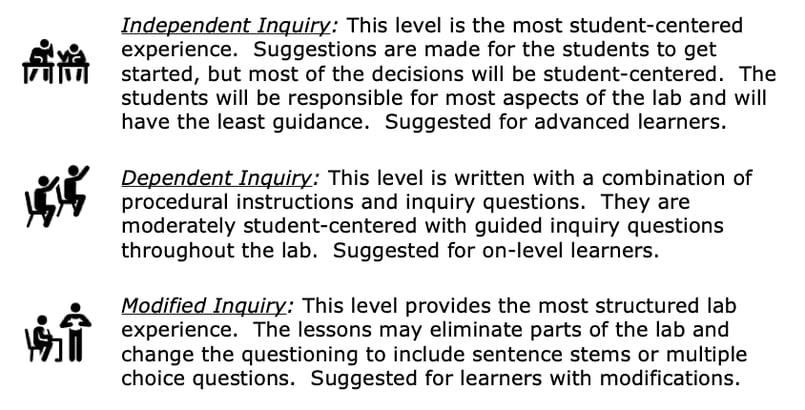Turgor Pressure Inquiry Lab
Middle School Inquiry Lab on Turgor Pressure
In this lab students will illustrate and analyze the force of turgor pressure. Students will investigate how different concentrations of saltwater affect the vacuoles in a cell and discuss how a lack of turgor pressure impacts plants.
Each inquiry lab will contain an essential question that will drive the lesson and make students think. For this lesson, the essential question is:
- What is happening to the vacuole in a plant cell as turgor pressure increases?
BACKGROUND INFORMATION AND MATERIALS LIST:
Students will begin the lab by reading the essential question and background information. This can be done individually, as lab groups, or as a whole class. If you consider lab groups, you also might include some type of whole class formative checks before digging into the lab.

Materials List:
- 3 250 mL beakers
- 1/2-inch slice of potato
- 600 mL of distilled water
- 50 g of table salt
- stirring rod
- ruler
- timer
- paper Towel
- balance
PROCEDURE:
For this lab, students will draw conclusions as to the effect of saltwater on plant cells and how this relates to the amount of turgor pressure contained within the plant cells. Students begin by adding water into three different beakers. Next students begin mixing and dissolving salt into a couple of beakers, each with a specific concentration.
This next part you can do ahead of time, during class, or have your students complete, but slices of potato need to be cut out in equal lengths. Students will take measurements of their cuts and record them in their data table. After measurements are taken, students will soak their slices in all three beakers. You might want to have a class discussion or alternative assignment because there is a little bit of a wait time involved.
Students will soak, measure, soak, and measure again, as they watch how the lack of turgor pressure changes the amount of “bend” the potato slices can achieve before snapping. Students will continue to measure after each soaking period and also sketch how far their slices bent as well.
CHECK FOR UNDERSTANDING:
At this point in the lab, students will be checked for understanding by answering questions about their findings. Here is one that comes with the lab:
- Think about your potato in the 20% salt solution. What is happening to the vacuole of the potato cells that is causing them to become weaker?
CONCLUSION
Students will go back to the essential question and write a CER (Claim, Evidence, Reasoning) to conclude the lab. Once completed, students will reflect back on their learning by answering the following questions:
- Which potato slice represented the greatest amount of turgor pressure? The least amount of turgor pressure?
- Describe what happened to the vacuole of the potato cells in the 20% saltwater solution.
- Work is done when a force causes an object to move a distance. How is turgor pressure in a plant related to work?
MODIFIED AND INDEPENDENT INQUIRY VERSIONS
All of the Kesler Science inquiry labs come with three different modification levels. Each lab is differentiated using the icons below.
STANDARDS ALIGNMENT
TEKS: 7.7B – Demonstrate and illustrate forces that affect motion in organisms such as emergence of seedlings, turgor pressure, geotropism, and circulation of blood.

Download Over $100 in FREE Resources
For Middle School Science
Simply create a login below and gain immediate access to a selection of our Kesler Science product line worth $100 - for FREE. There's a full version of every product type! You'll also join tens of thousands of middle school science teachers who receive timely tips and strategies straight to their inbox.





